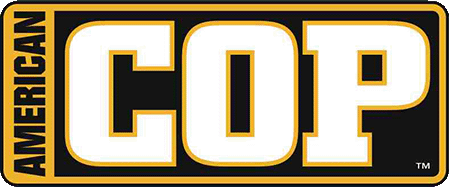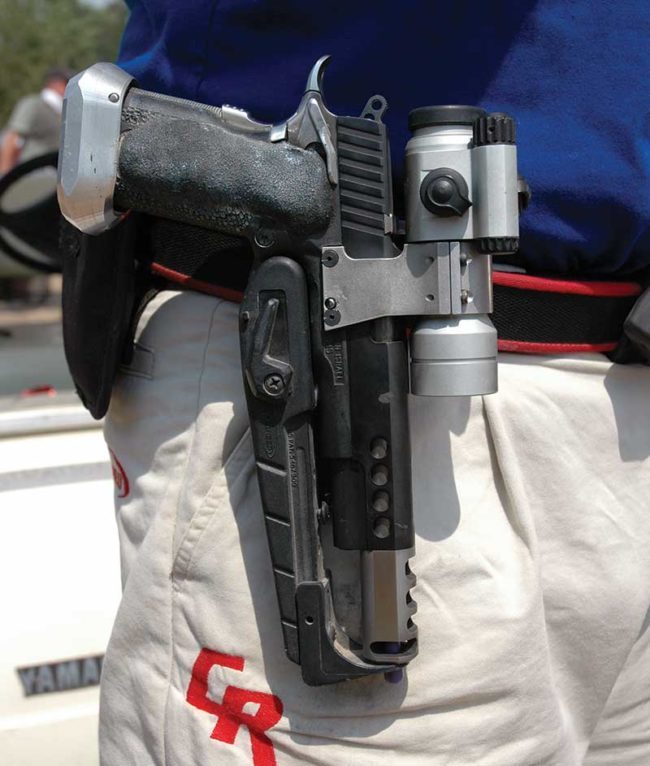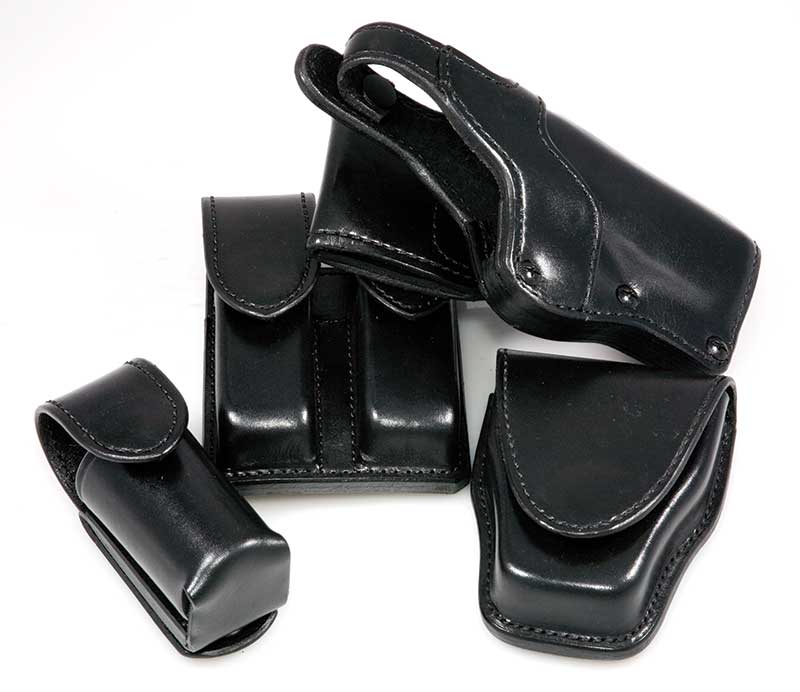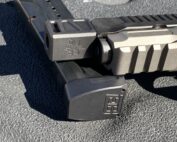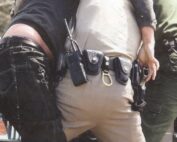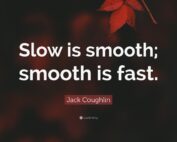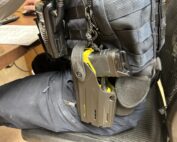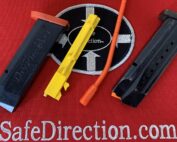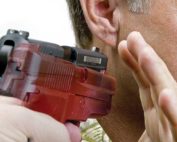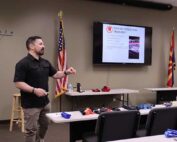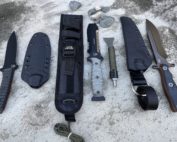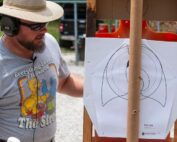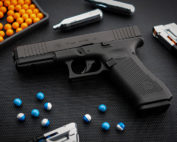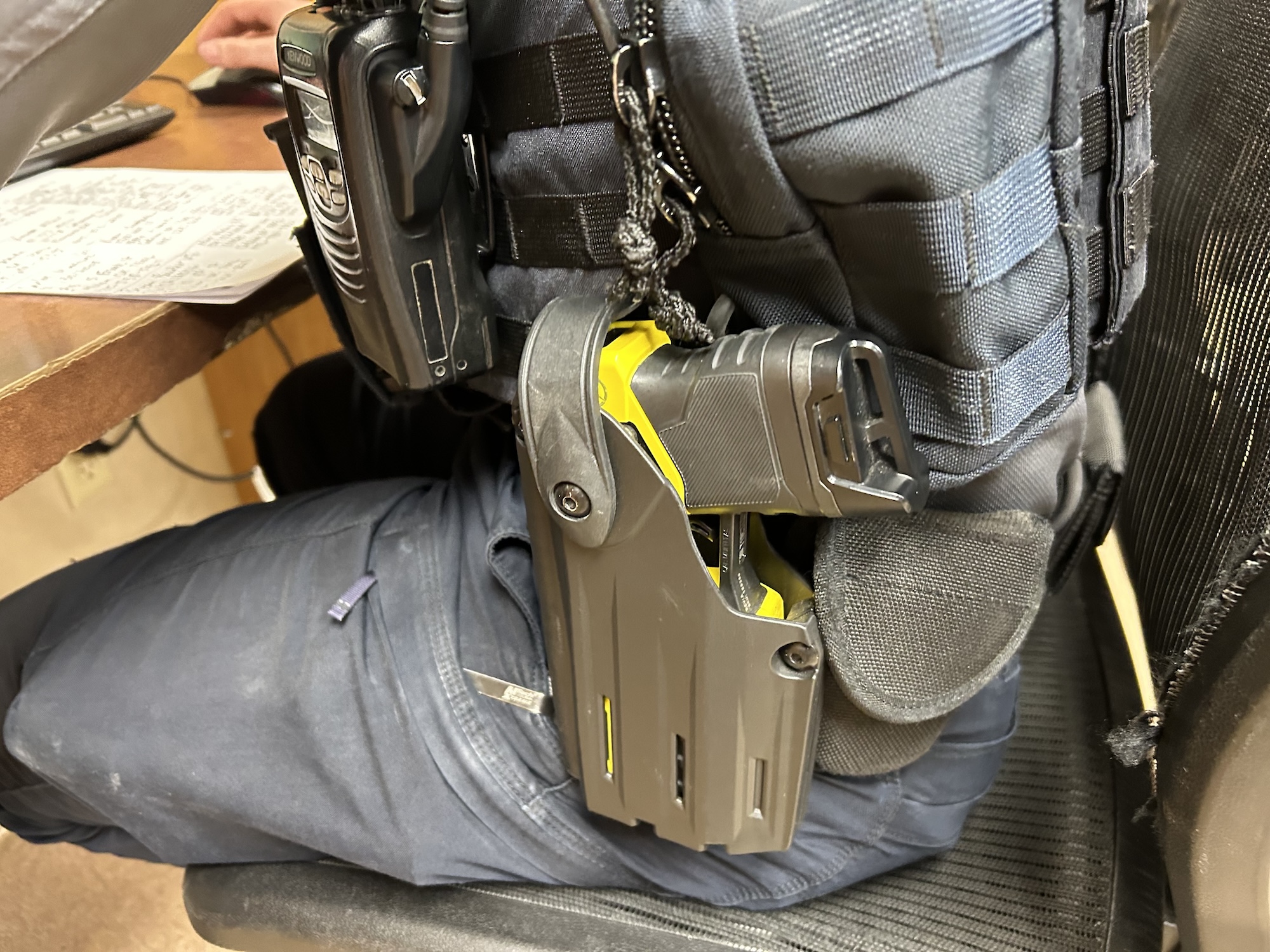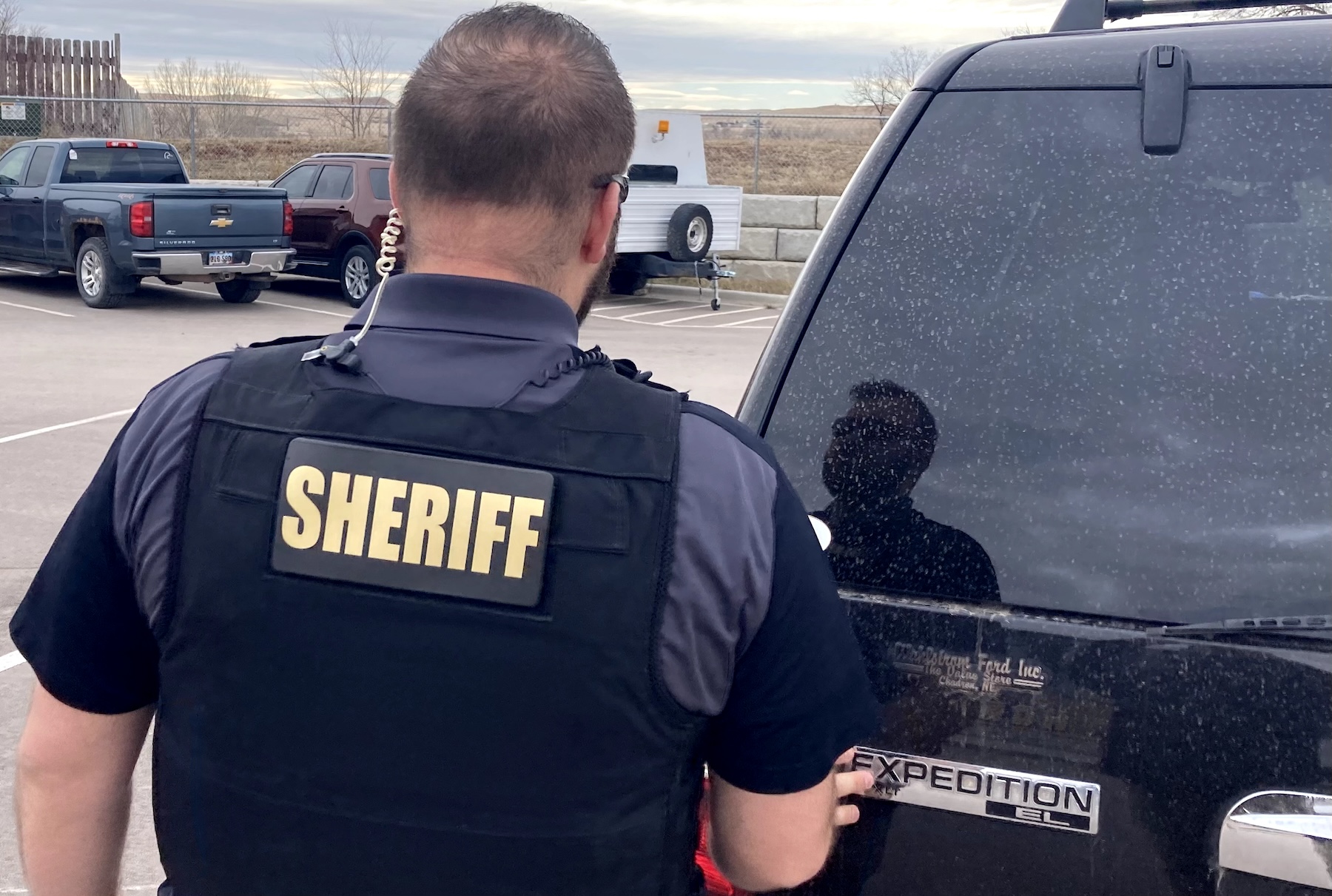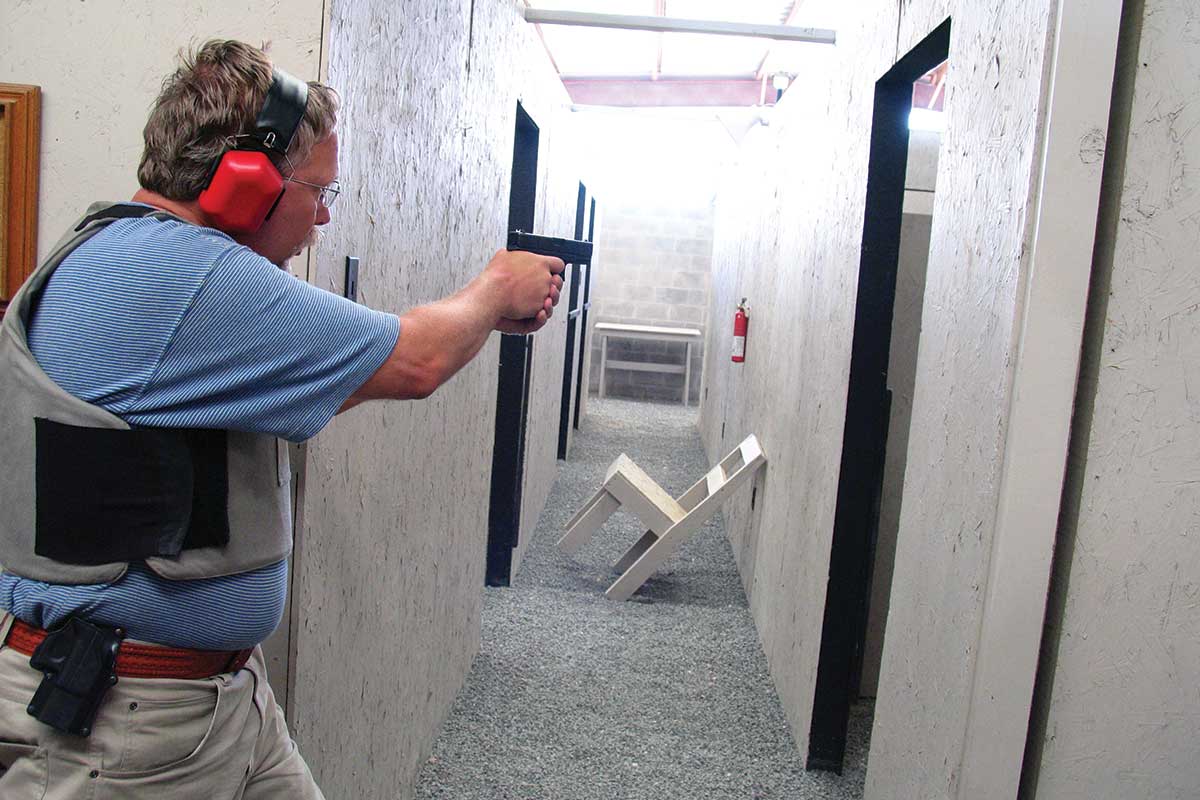
ACMA09_Comp_Shtng1-800
Nothing says training can’t be fun. Action-based competitive shooting is both derided as the province of silk pajama-wearing game players, and praised as the single most important exercise you can do to improve your shooting. They’re damned as a superb way to ingrain habits that will most surely get you killed on the street. Yet, participation in them has been noted as a common characteristic of police officers who have won street gunfights by no less an authority than the late Jim Cirillo.
So what’s the truth? Politicians would say the truth is some-where in between. I’m not much suited for public office, so I’ll say it seems to me both sides of the argument are true — which is not the same thing.
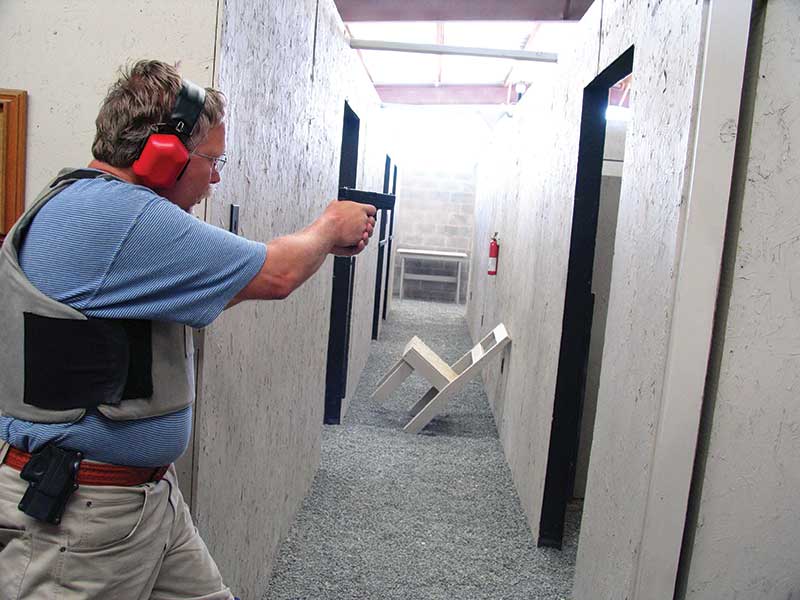
While this is live-fire training, not everyone is able to attend classes like this one. Yet, local matches often give opportunities for some live-fire action outside of a static police range.
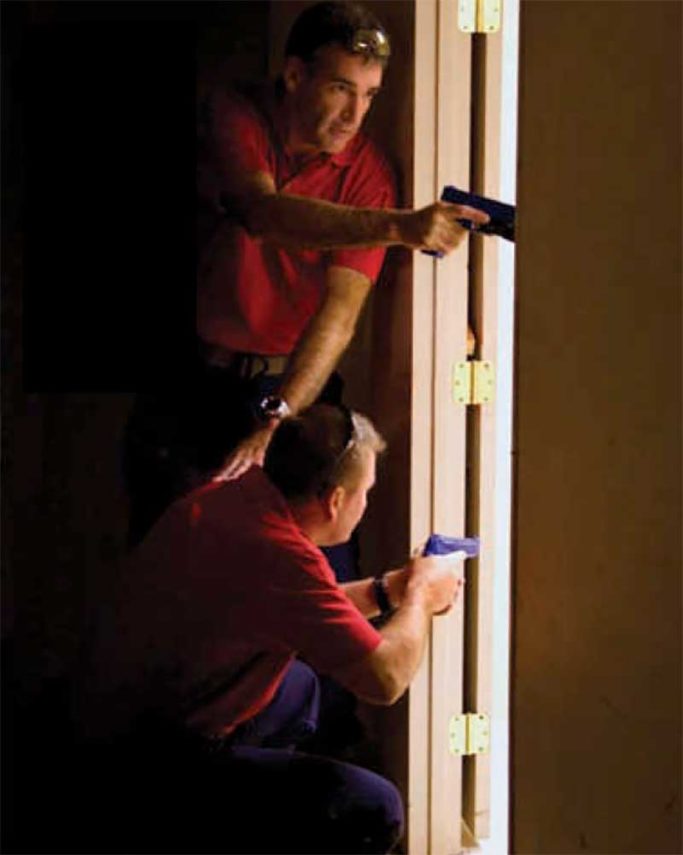
Tactics applied during competition can be applied during training and in the real world, and in reverse. These Australian officers are training in low-light with inert guns, but later put what they learned to use in live-fire.
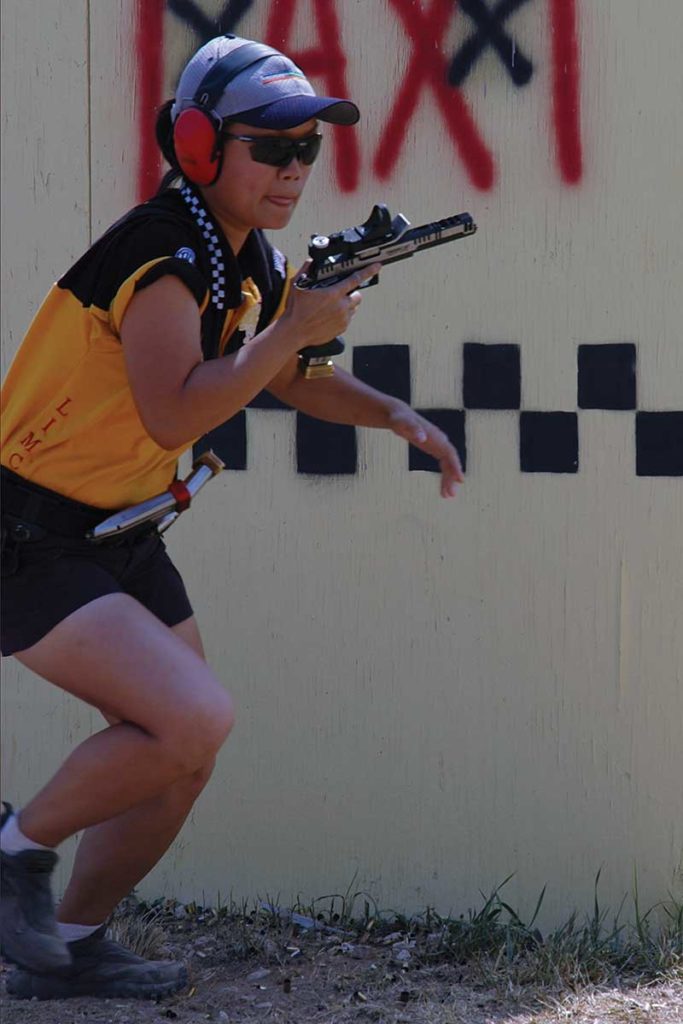
Here, top competitor Athena Lee demonstrates winning com-petition form — which may not be what you want to use during your own competition. A more realistic approach may be better.
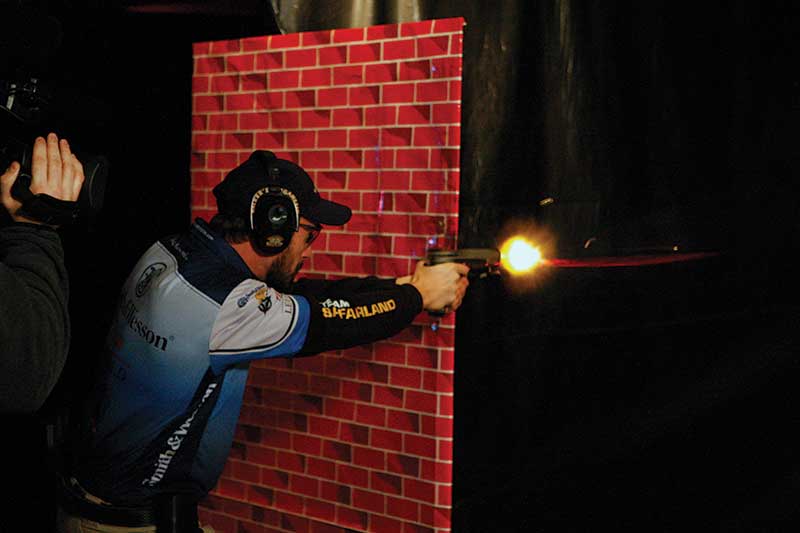
You can see Doug Koenig’s muzzle flash and laser here. Regard-less of your thoughts on the equipment, at least he’s getting real- world experience using it.
THE GOOD
You do indeed feel stress in a match. It’s not life-threatening stress, to be sure, but it is stress. This serves two very useful purposes (besides the fun, if you enjoy the challenge that stress creates). It serves to inoculate you from some stress. This is more inoculation than you get at the range while qualifying. You really don’t want the first time you feel stress with a gun in your hand to be when you have to use it for real. It’s like martial arts or boxing — neither is real fighting, but both give you some reason-able experience in handling stress, as well as providing you some useful skills.
The skills competitive shooting helps you to develop are important too. Simply put, there is nothing like shooting matches and training for them to get you familiar with your equipment to the point you can unconsciously run your gun (load, reload, clear malfunctions, and so on), and teach you to shoot fast and accurately. Fast, accurate shooting is what survival shooting — the kind of shooting cops do in the street — is all about. Enter a local IDPA or IPSC match and if you thought you were fast, you’ll be humbled. If you thought you were accurate at speed, you’ll get a whole new perspective of what that means.
Getting good at these sports will force you to practice; your badge is no substitute for a case of ammunition and a few hours on the range.
And by the way, there’s really no silk pajamas involved in the sport. A touch of polyester at the high end, yes, but hey, who doesn’t enjoy that now and then?
THE BAD
Doing well in a match, at least if you care about the score, will force you to per-form tactics completely unsafe on the street. You’ll be forced to shoot from out in the open — indeed, you’ll be forced to charge right out into the open from perfectly safe cover; you’ll have to expose way too much of yourself from behind cover and you’ll frequently shoot from open doorways. The concept of the “fatal funnel” has no relevance in the sport shooting world.
The issue here is you will react as you’ve trained in a real situation. In the real world, most often safe and practical tactics involve obsessive use of cover, slow and deliberate clearing, light management and stealth shooting, to name a few. These tactics are not practiced in competitive shooting, and in fact, you can’t begin to score well if you apply them.
Perhaps the most dangerous habit you can ingrain from competitive shooting is quickly shooting at targets as you see them. Judgment and target discrimination have little place in these events. The “no-shoot” targets used in IDPA matches are too primitive to count as real judgment training, in my opinion.
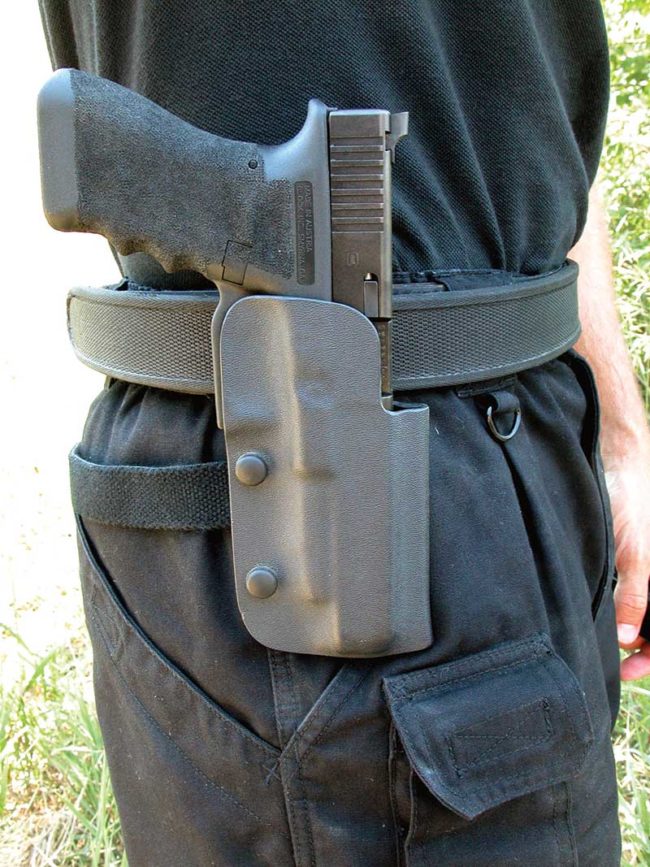
Simple is good. This basic Glock was in a competitor’s holster and would serve as a duty gun just about anywhere.
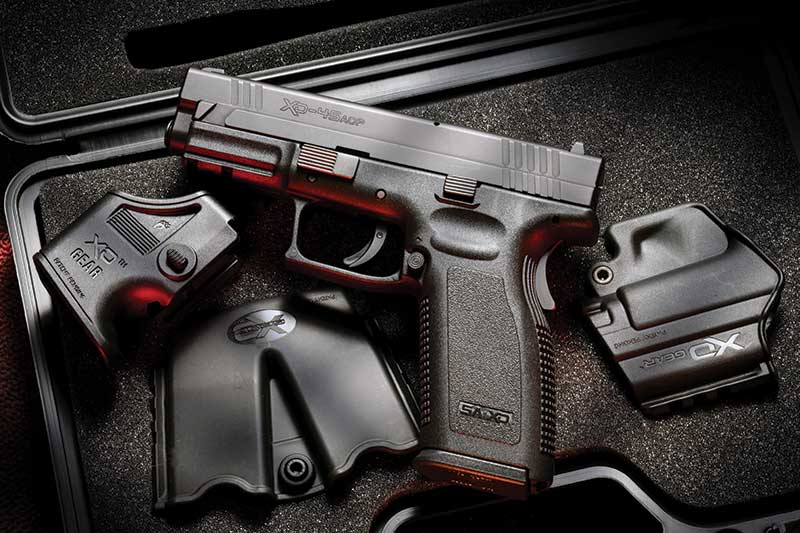
Springfield Armory’s XD is available in a “kit” you can put right to work — mag pouch, holster, gun and even a mag loader. All might do double-duty as a working gun too.
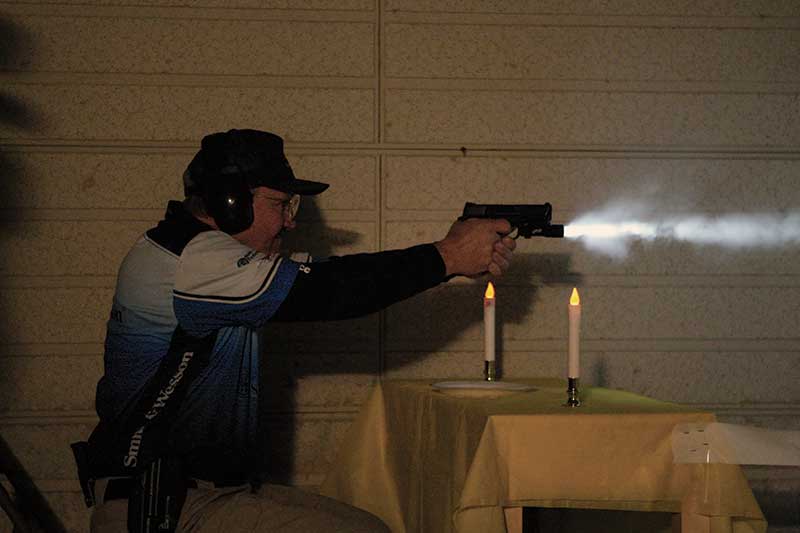
The smoke from Jerry Miculek’s shot is visible in the beam of his rail-mounted light in this stage. When was the last time you actually fired your handgun at a target using the mounted light? Photo: Yamil Sued
THE BOTTOM LINE
If competitive sport shooting ingrains both valuable gun handling and shooting skills, yet unsafe tactics, should you en-gage in the sports? Absolutely. The key is to keep the habits learned in competitive shooting separate from the habits you need for survival shooting. There are three ways to do this.
Only do a relatively small amount of competitive shooting. The key word here is “relatively.” If you default to your strongest training — your deepest reflexive rut, if you will — then using competitive shooting as a way to enhance your speed and accuracy can be done safely so long as it’s done in moderation com-pared to the survival shooting practice you do. Lot’s of cops take this approach. Compete, but forget about the times (and therefore the score), and run the stages correctly from a tactics point of view. You’ll be a heck of a lot slower on any given stage, but you’ll be ingraining the good tactics you already know. I know a couple well-known trainers who take this approach to the shooting sports. Engage in both survival and competitive shooting practice heavily and often. Master competitive shooter Bryce Linskey of the Bristol, Connecticut, PD SWAT team takes this approach. I once asked him if he was afraid of defaulting to dangerous competitive shooting tactics while working SWAT. He replied, “Look, when I’m in uniform, wearing all my SWAT gear, my operating context is clear, and I have no trouble maintaining a real-life mindset.”
Pick one of the above, but by all means, don’t neglect to participate. There’s a competitive shooting league somewhere close to you, and it will force you to shoot more often, improve your shooting, give you some fun and let you shoot courses of fire you don’t have the time or equipment to set up yourself. Are you afraid your shooting isn’t up to snuff? Well, you’re probably right. The average competitive shooter is a better shooter than the average cop. But you know something? They already know that. But they’re a friendlier, more supportive bunch of people you’ll ever find. So swallow your pride and get to it.
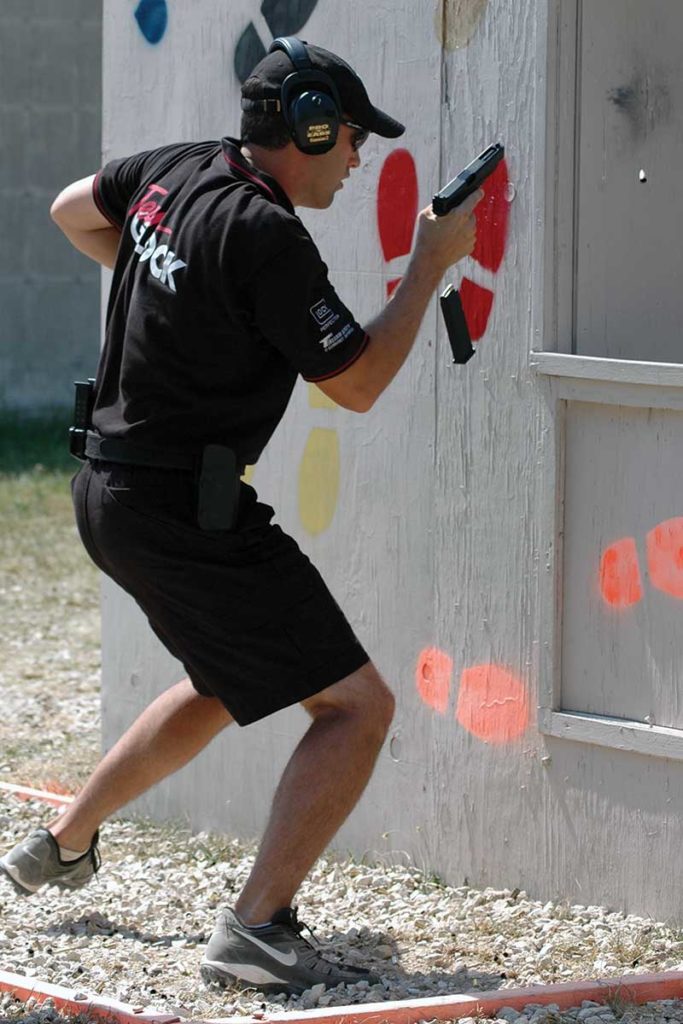
Here, Dave Sevigny drops a mag during the 2005 Nationals. If you compete and train using tactical reloads, this would be the time to do it, rather than use gamesmanship.
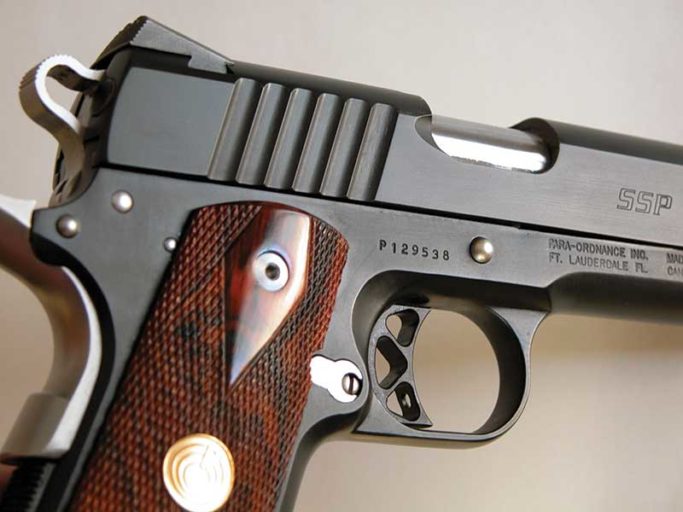
You don’t need a fancy gun to compete, your duty gun will almost always work at some level, or a basic 1911 like this ParaOrdnance might be your “competition” gun if you carry a 1911 on duty.
